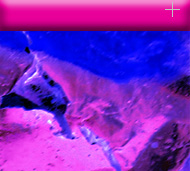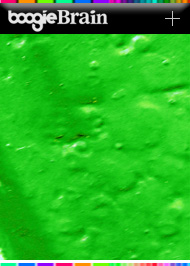
About the city
Szczecin is the capital of Western Pomerania and the largest Polish city located in the vicinity of three European countries: Germany, Denmark and Sweden. The city was modelled on Paris, with a number of star-shaped squares, and is known as the "city of greenery". Obviously there is a reason to it. There are very few towns in Poland with comparable greenery, water areas and climate favourable for both living and tourism. The urban built-up areas contain green enclaves as well as parks featuring rare tree and bush species, and one of the largest cemeteries - the Central Cemetery (area of approx. 170 ha). The squares in Szczecin are planted with many varieties of magnolia that bloom in spring. The city is located on the edge of three forests: Bukowa, Goleniowska and Wkrzańska. It takes Szczecin residents slightly over an hour by car, train or ferry to get to famous seaside resorts - Świnoujście (with ferry service to Denmark and Sweden), Miedzyzdroje, Dziwnow or Rewal. Equally popular are towns located at the Lagoon of Szczecin - Nowe Warpno, Trzebiez, Stepnica. The city of Szczecin and Western Pomeranian Province are one of the most attractive tourist regions in Poland. We truly encourage you to visit our city.
Szczecin in a nutshell
If you come to Szczecin by train, you may start your sightseeing tour from the Central Railway Station up Dworcowa Street. On your right you will pass a red-brick post office building. Passing through an impressive Tobruk Square, on your left you can admire a monument fountain with an anchor and on your left the New Town Hall building. Once it housed the City Council, at the moment it is held by the maritime commerce institutions. Looking right once again, you will see a historic building of Ksiaznica Pomorska, the Library of Pomerania, and next to it, at Rybacka Street, the Pomerania Medical University. Going up Dworcowa Street will take you to the city centre. On your way there you will pass a distinctive, round and glazed building which houses the Tourist Information Centre. It is worth to drop in if you want to get some guides, maps, postcards, souvenirs or if you need extra information or assistance. When you get to the first junction, on your left you will find the admirable entrance gate to old Szczecin, one of the two that remain to this day – the Port Gate (Brama Portowa). Leave this remarkably preserved building behind and head down the Wyszyńskiego Street. Halfway through you will come across a footbridge which will take you to the other side of the road. Thus you will find yourself at the foot of the Metropolitan Basilica Cathedral of St. Jacob. The monumental cathedral was destroyed in the Second World War, but it was restored and now resembles the initial state of the 15th century. The cathedral is next to the White Eagle Square (Plac Orla Bialego) with a baroque fountain with an eagle sculpture, and the Palace under the Globe (Palac pod Globusem). Next, the route will take you through Grodzka Street to an orange edifice – the Loitz Tenement House (Kamienica Loitzow - now the Art Secondary School). From here take a path to the Arkona Hotel and then turn left to the new Old Town. The gothic building you can see in front of you is the Old Town Hall, administered by the National Museum. It houses the City History Department. You can visit the Town Hall’s vaults. They have been adapted for catering purposes, and house the Canarillo restaurant. The Town Hall is the only original building in the Old Town of Szczecin. Other buildings have been rebuilt recently, only partly referring to their original versions; however, it is still worth taking a walk in these narrow streets along the Odra River. The Old Town is just a few steps from the Pomeranian Dukes’ Castle. To get to it pass by the Arkona Hotel once again and then take a turn into a narrow street called Kurkowa. And here you are, at the foot of the castle. Now you just need to climb a few dozen steps up to find yourself at the entrance to the large bailey. There is a stage on the bailey, on which numerous cultural events are held during season. You can rest here on a bench and take a look at the clock tower dating back to the 16th century. The castle houses e.g. the Opera and the Operetta, a concert hall, a wedding hall of the Register Office, a crypt with sarcophagi, the "Krypta" theatre, "Zamkowa" restaurant, the Marshall Office and "Na Kuncu Korytarza Cafe". Part of the Castle is available for visitors (e.g. ducal sarcophagi or the Bell Tower with the observation deck). The Bell Tower is located at the Mint Bailey (Museum Bailey). To get there take a path in the West Wing of the Castle. Thus you will find yourself facing the Cultural and Tourist Information Centre. The entrance to the Bell Tower is at the right. Let’s continue the tour and head to the exit gate (next to the Cultural and Tourist Information Centre) and walk along the Professors’ Houses. Once they were the residence of the lecturers at the St. Mary’s College, at the moment they are just regular houses. Here you should cross the road that will lead you to the Castle Route. Cross at the pedestrian crossing and you will see the gothic Church of St. Peter and Paul. Let’s now head along Malopolska Street down, to the Chrobry Embankment (Waly Chrobrego). The Embankment surely is definitely the trademark the city, the most representative part of Szczecin. It comprises terraces, beautifully surrounded by trees, going down to the Odra River. A walk along the Embankment is one of city’s main attractions. Apart from the view at the port, there are also other things to admire as you walk: the Maritime Academy, the Marine Museum and the Modern Theatre, as well as the Province Office. Here you can have a rest on a bench or in one of the restaurants. Or you can take the stairs down to walk along the river. The Chrobry Embankment is a popular meeting point for the residents of Szczecin, especially in summer. During season various events are organised here, such as concerts of the celebration of the Sea Days. Szczecin is considered a green city. You can check this for yourself if you leave the Embankment taking the path between the Modern Theatre and the Province Office. Now you enter the Zeromskiego Park, note a monument of Adam Mickiewicz on your left. If you want to have a quiet rest among trees, you can stay longer and enjoy the park. As many as 177 species of trees and bushes have been found here. To follow the tourist route turn left. Walking along the Starzynskiego Street will get you to a square with a new monument of the Angel of Freedom. It is a monument to commemorate the events that took place in December 1970 (brutally suppressed protests of the Szczecin shipyard workers). Turn back to the monument and face the next monument of Szczecin: the Royal Gate (Brama Królewska). Now you are at the Soldier Square (Plac Zolnierza). Cross the road and turn right. This will take you to a complex of classical buildings. One of them houses the Modern Gallery of the National Museum. Next, stroll along the Aleja Papieza Jana Pawla II Avenue, also called the Fountain Avenue. First it leads to the Pilots’ Square (Plac Lotnikow). You cannot miss a monument of a medieval horse-mounted warrior in the middle on the Square. You are getting to the end of the route. What is left now is a walk along avenue. In the season period, there are lots of cafes where you can rest and listen to a murmur of water in many fountains. Further the avenue crosses a star-shaped Grunwaldzki Square. In summer it is a popular meeting place for chess players. If you walk further you will pass by a renovated building of the Vice-Chancellor’s Office of the University of Szczecin. The avenue leads you straight to the City Office dating back to 1927. The left wing of the Office houses the Philharmonic Orchestra of Szczecin. Cross the gate which links the parts of the office and enter Jasne Blonia – an enormous green area, surrounded by hundred years old plane trees and two monuments: that of Pope John Paul II and the Monument of the Deeds of Poles (Pomnik Czynu Polakow – monumental three eagles which symbolise three generations of Poles). This is the end of our trip of Szczecin. Jasne Blonia crosses the largest city's park - Kasprowicza Park with Rusalka Lake and the Summer Theatre.
Experimentarium Eureka
Experimentarium Eureka is a one of a kind exhibition of interactive experiments, where one learns and experiences while playing and using different devices. This exhibition is an amazing scientific fun fair organized in an interesting way for visitors of every age. One can play here with soap bubbles of several meters size, see huge sun ball or organize an unforgettable birthday party. Exhibition is open to visitors everyday between: Mon-Fri - 10am-4pm, Sat-Sun - 11am-4pm. Experimentraium is located at ul. Malczewskiego 10 (phone no.: +48 91 422 85 78).
Bosman Express Trip
Bosman express trips (starting in April 2008) are definitely recommended to try. It takes 75 minutes to get from Szczecin to Swinoujście and the landscapes on the way are absolutely breathtaking. Trips start at Chrobry Embarkment. More information: www.wodolot-szczecin.pl.
Cruises of the harbour
Szczecin, as a city of maritime character, offers cruises of the harbour as one of tourist attractions. The tickets for Odra Queen and Peene Queen mooring opposite Wały Chrobrego Waterfront may be purchased in the ticket office at ul. Jana z Kolna (phone no. +48 91 434 57 00 or +48 91 488 47 10). For more information see: www.statki.net.pl.
The Pionier 1909 Cinema
The Pionier Cinema was founded by Albert Pietzke, under the name of Helios. The first screening was made on 26 September 1909. Since the very beginning the cinema has had a specific atmosphere. Even after a thorough renovation in 2002, which brought modern equipment, the cinema did not lose its charm. In the cinema, in the so called Kiniarnia (Cinema Cafe), you can see a movie sitting at a table, in a cafe-like atmosphere. The cinema is a member of prestigious Europa Cinemas and Studio Cinemas networks.In August 2005 the Pionier cinema was awarded the title of the oldest still working cinema in the world. The certificate was issued by the Guiness World Records.
The Beech Wood and Emerald Lake
It is a large forest complex, mainly made up of beech trees, covering the area 76 km2 on the Beech Hills. The Beech Wood is a part of the Szczecin Landscape Park. Six nature reserves can be found here. Apart from beech trees there are also oaks, ash and pine trees. There are several hundred species of butterflies, deer, wild boars, foxes, martens, hares and other wild animals. The wood, as a place of settlement, dates back to approx. 1000 B.C. There are many nature monuments, such as erratic boulders and ancient trees. For those who are into hiking, many well labelled routes were prepared passing through the most attractive places. Villages in the Beech Wood are worth seeing, e.g.: Binowo, Kołowo, Dobropole, and other. Binowo Lake and golf course are attractive in terms of recreation. The favourite destination of strollers is Emerald Lake. For many years there was a chalk pit, mined from mid 19th c. by the waterproof Portland cement factory of G. Toepffer, A. Grawitz & Co. In mid 1920s the pit was filled with water and a lake was made of the surface of 4.5 ha and depth of approx. 20 m. Its emerald colour is a result of calcium carbonate. The highest hill in the Beech Wood is Bukowiec – 147 m a.s.l.
Starka
Starka – this traditional dry grain vodka is the noblest and at the same time the most mysterious liquor among all Polish vodkas. It belonged to favourite spirits on Polish courts. It’s been known for almost 500 years. Today, Starka is produced only by Polmos Distillery in Szczecin and its recipe is top secret. Starka’s phenomenon stems from its unique aroma and flavour, strong bouquet and a wonderful golden colour. The vodka owes it to the process of aging in oak barrels which lasts 10 to 50 years. Starka’s beautiful golden-brown colour is a result of a reaction between alcohol and a barrel in which it is stored. When is comes to flavour, Starka is similar to whisky. Both are distilled from grain. The former, however, is produced from rye while the latter from barley. What’s more, Starka has a different bouquet – stronger and more refined. Spacious and more than hundred years’ old cellars with excellent humidity and temperature conditions are great assets for the Polmos Distillery in Szczecin. Starka’s basements are open to visitors in organized groups (10-50 people). When visiting the distillery, the guests have the opportunity to taste the liquors – including 10 and 18 years’ old Starka.
Szczecin's Underground Paths
"Szczecin’s Underground Paths" is a reconstruction of a bomb shelter from WWII and a fallout shelter from the Cold War period. This is the biggest civilian shelter from the WWII period in Poland. Germans finished its construction in 1941. It was a bomb shelter for civilians. During its construction the Germans used old corridors which probably go back to the 19th century. The shelter is situated 5 floor levels underground and is located in a buttress flanked by the Breast Wall. Its height from its highest exit (Zawisza Square) to the bottom of the deepest level measures 17 meters. Its walls are made of 3 metre thick ferroconcrete and the ceiling of the same material is 2.8 meters thick. Its longest corridor stretches for about 100 meters. The total area of the shelter takes up 2,500 m2 while its usable area is 1,900 m2. Soon after being taken over by Poles, it was converted to a fallout shelter. It had been used as training ground for Civic Defense until the early 1990s. The shelter still holds mysteries as it is not known where the walled up corridors are leading.
The "WWII Route" – bomb shelter (LSR - Luftschutz Raume) – presents a reconstruction of living conditions in the shelter during air raids, discusses the technique of constructing a bomb shelter and presents the WWII period from the moment of the commencement of air raids against the city, through the battle for the city and takeover by the Polish communist authorities up to the effort of clearing the city of rubble and the first post-war years. The visitors will have opportunity to see the reconstructed rooms and signs, and will take a walk across its corridors. Trip duration: ca. 1 hour. Find more information at Rent And Toursit Center.
































































